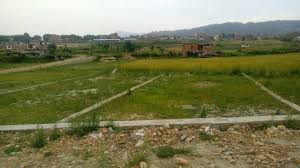Your Favourite Property Finder
Your Favourite Property Finder


Real State Market of Nepal
Real estate, also known as "ghar jagga" in Nepali, is comparable to the idea everywhere else. It includes:
Land: This is the foundation, including the physical ground and natural resources like trees, minerals, and water.
Buildings & Structures: This category includes residential and commercial structures and any long-term, man-made modifications to the land.
Similar to other nations, Nepal’s real estate includes rights related to possessing or utilizing land, buildings, and other tangible property. Land used for residential, commercial, industrial, and agricultural purposes is all included in the real estate industry.
Some aspects of the real estate sector in Nepal:
Residential real estate: comprises residential buildings, including homes, apartments, and condominiums. Nepal's residential property market is driven by several factors, including income levels, urbanization, and population expansion.
Commercial Real Estate: Office buildings, retail stores, hotels, restaurants, and other commercial establishments are examples of commercial properties in Nepal. The increase in businesses, tourism, and economic growth are the main drivers of the demand for commercial real estate.
Industrial Real Estate: Buildings and land utilized for production, storage, and other industrial purposes make up industrial properties. Industrial real estate has become more in demand due to Nepal's initiatives to encourage industrialization and draw in international investment.
Farmlands, orchards, and agricultural estates: Are all considered to be part of Nepal's agricultural real estate, which is a key industry in the country. Agricultural real estate markets may be impacted by land reform laws and government programs aimed at modernizing the agricultural industry.
Real Estate Development: Developing real estate entails building new homes or remodeling old ones. The real estate market in Nepal is largely shaped by developers who build mixed-use, residential, and commercial properties.
Legal Framework: In Nepal, the real estate industry is controlled by laws and rules concerning registration, zoning, land use, and property ownership. Complying with the legislation and comprehending the legal framework is crucial for both buyers and investments.
Overall, Nepal's real estate market provides chances for investment, expansion, and growth, fueled by urbanization, infrastructure development, and economic success. However, like every market, it has obstacles and hazards that investors and stakeholders must carefully examine.
The Nepalese real estate market is a mixed bag current days Here's a breakdown:
Growth and Demand:
There is a high demand for housing, with estimates indicating a deficit of more than 100,000 units. This is especially true for major cities like Kathmandu and Pokhara.
Experts expect that the market will continue to develop, reaching $0.38 trillion in 2024 and growing at a rate of more than 5% each year until 2028.
Challenges:
Recent government regulations have slowed down market activity.
Many people are finding it difficult to purchase land due to its high cost, especially in desirable places.
There is concern that potential investors will have limited access to financing.
Despite the current dip, the Nepalese real estate market appears to be on an upward trend in the long run. However, exorbitant prices and regulatory requirements remain present roadblocks.
The real estate market in Nepal has been experiencing growth and transformation driven by several factors:
Urbanization: Nepal is rapidly urbanizing, with a large proportion of the population migrating to cities in quest of better economic prospects. This has led to increased demand for housing, commercial spaces, and infrastructure development in cities like Kathmandu, Pokhara, and Biratnagar.
Infrastructure Development: To promote economic growth and urban development, the government has made investments in infrastructure projects such as road networks, transportation systems, and utilities. Improved infrastructure has increased connectivity and accessibility, hence enhancing real estate activity.
Foreign Investment: Nepal has attracted foreign investment in a variety of industries, including real estate. Foreign investors have expressed an interest in commercial buildings, hospitality projects, and tourism-related initiatives, helping to drive the real estate market forward.
Tourism: Nepal's tourism industry, noted for its natural beauty, cultural legacy, and adventure tourism prospects, has been steadily expanding. This expansion has increased demand for hospitality properties like as hotels, resorts, and guesthouses, particularly in major tourist locations such as the Kathmandu Valley, Pokhara, and Chitwan.
Legal and Regulatory changes: The government has implemented changes to streamline the real estate business while increasing openness and accountability. Efforts to digitize land records, simplify property registration processes, and strengthen investor protection have contributed to a more favorable climate for real estate transactions.
Economic Stability: Despite facing challenges such as political instability and natural disasters, Nepal has maintained relative economic stability in recent years. Stable economic conditions have boosted investor confidence and encouraged real estate development and investment.
While Nepal's real estate sector offers potential for investors and developers, it also faces obstacles such as land scarcity, insufficient infrastructure, and regulatory barriers. Furthermore, the impact of the COVID-19 epidemic on tourist and economic activity has had ramifications for the real estate sector, underscoring the significance of resilience and adaptability in navigating market changes.
The Nepalese real estate market shows potential for long-term growth driven by factors like:
High demand: A housing shortage, especially in urban areas, drives market activity.
Economic factors: Nepal's developing economy and remittance inflows from outside help to drive real estate investment.
.
However, there are short-term challenges to navigate:
Market correction: Recent rules may result in price adjustments following a period of fast expansion.
Affordability: High land prices deter some potential buyers.
Financing limitations: Access to financing for real estate purchases may be limited.
Moreover, the Nepalese real estate market provides potential while simultaneously presenting challenges. Long-term prospects are promising, but negotiating current pricing fluctuations and securing funding will be critical for ongoing growth.